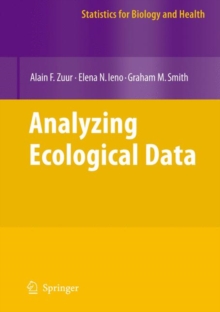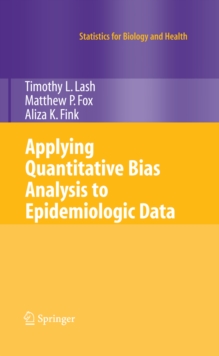
Capture-Recapture: Parameter Estimation for Open Animal Populations Paperback / softback
by George A. F. Seber, Matthew R. Schofield
Part of the Statistics for Biology and Health series
Paperback / softback
Description
This comprehensive book, rich with applications, offers a quantitative framework for the analysis of the various capture-recapture models for open animal populations, while also addressing associated computational methods. The state of our wildlife populations provides a litmus test for the state of our environment, especially in light of global warming and the increasing pollution of our land, seas, and air.
In addition to monitoring our food resources such as fisheries, we need to protect endangered species from the effects of human activities (e.g. rhinos, whales, or encroachments on the habitat of orangutans).
Pests must be be controlled, whether insects or viruses, and we need to cope with growing feral populations such as opossums, rabbits, and pigs. Accordingly, we need to obtain information about a given population’s dynamics, concerning e.g. mortality, birth, growth, breeding, sex, and migration, and determine whether the respective population is increasing , static, or declining.
There are many methods for obtaining population information, but the most useful (and most work-intensive) is generically known as “capture-recapture,” where we mark or tag a representative sample of individuals from the population and follow that sample over time using recaptures, resightings, or dead recoveries.
Marks can be natural, such as stripes, fin profiles, and even DNA; or artificial, such as spots on insects.
Attached tags can, for example, be simple bands or streamers, or more sophisticated variants such as radio and sonic transmitters.
To estimate population parameters, sophisticated and complex mathematical models have been devised on the basis of recapture information and computer packages.
This book addresses the analysis of such models. It is primarily intended for ecologists and wildlife managers who wish to apply the methods to the types of problems discussed above, though it will also benefit researchers and graduate students in ecology.
Familiarity with basic statistical concepts is essential.
Information
-
Available to Order - This title is available to order, with delivery expected within 2 weeks
- Format:Paperback / softback
- Pages:663 pages, 15 Illustrations, black and white; XIX, 663 p. 15 illus.
- Publisher:Springer Nature Switzerland AG
- Publication Date:26/08/2020
- Category:
- ISBN:9783030181895
Information
-
Available to Order - This title is available to order, with delivery expected within 2 weeks
- Format:Paperback / softback
- Pages:663 pages, 15 Illustrations, black and white; XIX, 663 p. 15 illus.
- Publisher:Springer Nature Switzerland AG
- Publication Date:26/08/2020
- Category:
- ISBN:9783030181895










